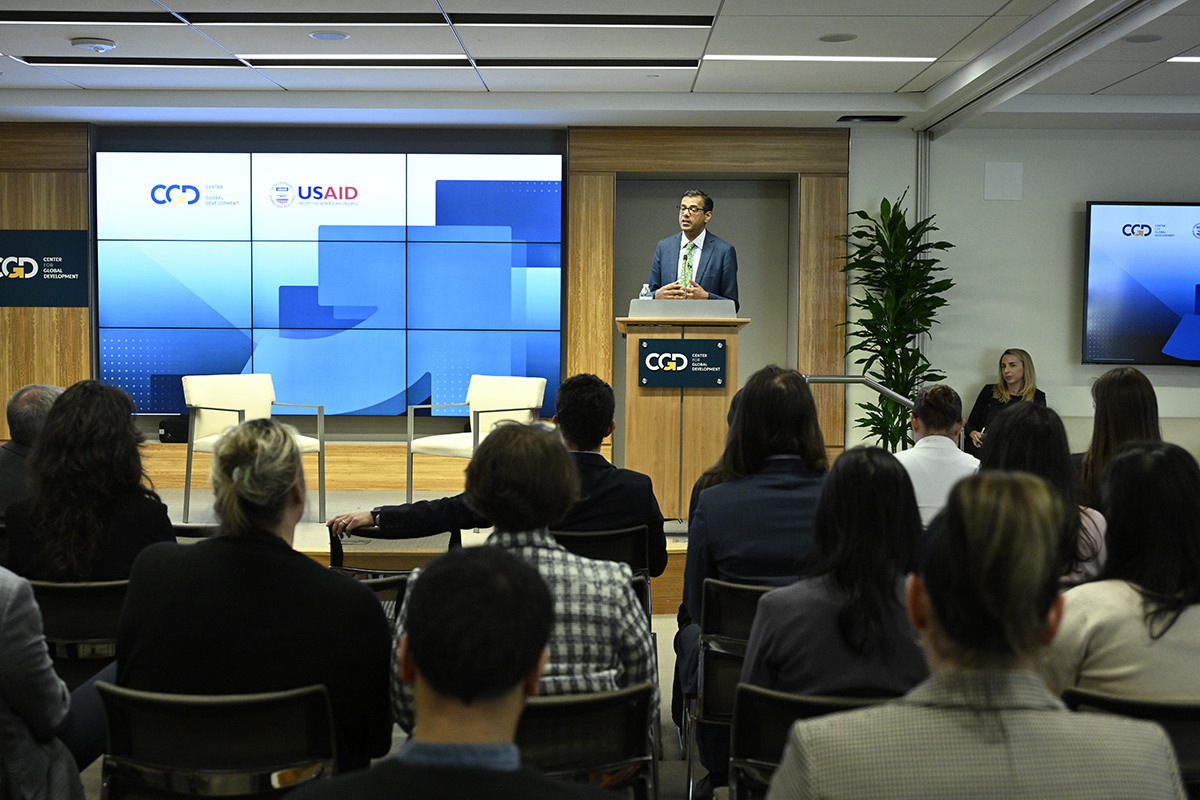Today, USAID took a big step forward on a new effort that could make a real difference to the agency’s impact and cost-effectiveness.
USAID wants to know whether its programs work better, for less cost, than just giving poor people cash. To answer that question, it has embarked upon a series of cash benchmarking evaluations (an idea we’ve discussed previously) that compare the per-dollar impact of USAID programs with that of a comparably sized cash transfer given directly to individuals or households. The first results are out today and will hopefully prompt constructive conversation about how USAID can better use evidence to select and design impactful and cost-effective programs. In a new policy note, we describe USAID’s cash benchmarking effort and explain why it’s important. We also offer recommendations for how the agency should take the approach forward and suggest ways that Congress can help ensure it’s done well.
Effectiveness and cost-effectiveness should be at the core of USAID’s work. Despite an expressed interest in delivering value for money, it’s not always clear that this objective trumps others when it comes to USAID’s work—or the directives placed on the agency by Congress. But USAID should establish—and Congress should demand—a high standard of evidence, particularly given the agency’s portfolio, which is heavily concentrated in areas like health, education, and agriculture, where it is both feasible and necessary to understand what works.
A robust understanding of cost-effectiveness will also be a crucial underpinning as USAID works to assist partner countries along their “Journey to Self-Reliance.” If partner countries are increasingly asked to plan, implement, and finance their own development, the countries and USAID will need to understand what programs work, how they work, and how much they cost. Knowing whether aid-financed investments are worthwhile and affordable will help cash-strapped low-income countries decide when and how to transition them onto their own budgets.
Cash benchmarking is one way to make this assessment. It involves evaluating the per-dollar impact of two programs on a particular set of development objectives—one of the programs is a “typical-style” program with defined interventions, the other is a cash transfer program that delivers unconditional grants to households or individuals. Because cash transfers are simple to implement, they’re just about the lowest cost way to help someone, making their per-dollar impact a baseline level of value for money. This can help inform the selection and design of future programs. USAID can assess whether proposed programs are good value by estimating whether they will achieve more results-per-dollar than an equivalent amount of cash.
While this kind of benchmarking has been done previously (for example, the World Food Programme looked at cash vs food), and cash transfer programs are common practice elsewhere in the development field, USAID is blazing a trail as the first bilateral donor to begin to use them to understand prospectively how its money can be used most cost-effectively.
The study released today—the first of several in the pipeline—was a head-to-head evaluation that compared a nutrition and water and sanitation program in Rwanda to cash transfers given to Rwandan households. It yields interesting results: neither the in-kind interventions nor an equivalent amount of cash made a difference for the nutrition and child health outcomes that were the primary target of the program (though the former improved savings and the latter reduced debt levels and increased assets, all secondary objectives). A larger (but still modest) amount of cash to the same kinds of households, on the other hand, did improve child health and nutrition outcomes.
This is, of course, a single study in a single place, so one can’t draw firm conclusions about the relative effectiveness and value of nutrition programming versus cash. But it provides an important part of the picture—a picture that will become clearer as USAID reviews and contributes further to the evidence on the effectiveness of cash transfers and various programmatic interventions.
By undertaking this cash-benchmarking initiative, USAID is demonstrating an important commitment to understanding the impact and cost-effectiveness of its programming. We hope this study is the first of many. Our new note offers four strategies that will help the agency get the most from this effort.
We also outline six key questions Congress should ask in its oversight of the agency. To date, USAID has been keeping this work relatively quiet. Moving forward, we hope to see the agency take a proactive approach in consulting with Capitol Hill and other stakeholders in Washington and the field. Our fingers are crossed that USAID will find a receptive audience that supports its efforts to use evidence to increase high-value development impact.
Thanks to Erin Collinson for her review and comments to the blog and policy note.
Disclaimer
CGD blog posts reflect the views of the authors, drawing on prior research and experience in their areas of expertise. CGD is a nonpartisan, independent organization and does not take institutional positions.





